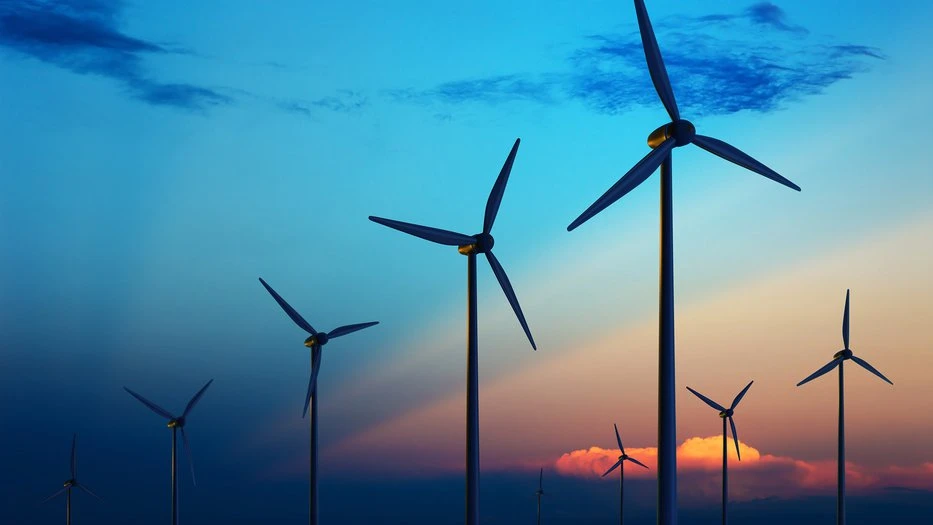
This situation reflects the broader reality of many businesses struggling and calling for help from the authorities. Saigon Investment interviewed Assoc. Prof. Dr. NGUYỄN HỮU HUÂN from Ho Chi Minh City University of Economics to discuss these pressing issues.
JOURNALIST: - Sir, the difficulties of businesses and banks in developing wind power projects in Vietnam seem to be increasing. What are your thoughts on this situation?
Associate Professor, PhD. NGUYỄN HỮU HUÂN: - The wind power industry is currently facing significant challenges due to both objective and subjective reasons. Firstly, the policy risk is quite large. Initially, the policy encouraged the development of wind power, but after the sector grew too rapidly and exceeded the planning capacities of the power industry and the Ministry of Industry and Trade, the policies were tightened. Specifically, the Ministry introduced discouraging policies.
Such inconsistent policies have placed businesses investing in wind power in a difficult position. The issue isn't solely with the banks or businesses. The cost of a wind power tower is very high (around VND 30 billion), necessitating a long payback period. Initially, businesses and banks calculated a 5-year recovery period, but with the new policies, it now takes up to 15 years, making capital recovery challenging, if not impossible.
Another issue is that wind power enterprises often base their projects on theoretical parameters. However, Vietnam's climate conditions, weather, and wind sources are unstable. Inconsistent wind patterns mean that wind turbines cannot operate effectively year-round, leading to lower-than-expected revenue and capacity.
- The wind power plant in Binh Thuan is facing tightened debt by the bank, and the bank has put the debt up for sale for the fourth time, reducing the price each time due to a lack of buyers. How do you assess the risk of bad debt in the wind power sector?
- Banks are hesitant to deploy green credit because it involves new industries. The appraisal staff often lack the experience and knowledge to evaluate the feasibility of these projects, leading to potential bad debt. There was a period when banks heavily invested in the wind power sector. This investment surge was driven by Vietnam's goal of developing a green economy, with the State Bank setting a target for green credit to account for about 10% of total outstanding credit. Consequently, banks supported the Government's and State Bank's initiatives on green credit growth to foster green economic development.
- In addition to debt pressure, the increasing outstanding bond debt and the pressure to repay bond debt are also significant concerns. Are businesses investing in wind power facing difficulties because they are "fighting the enemy with their bare hands"?
- Infrastructure investment sectors often have a high debt ratio, sometimes up to 80-90%, or even 100% if banks provide full funding. Building wind power plants requires vast amounts of capital, often reaching thousands or tens of thousands of billions of dong. These projects have high value, but the equity capital of the companies involved is usually low. Moreover, the industry typically has low profit margins and long payback periods.
For wind power, borrowing or issuing bonds comes with lower capital costs. Green credit loans and green bond issuance usually offer preferential interest rates, which businesses should leverage. Most bond buyers in this sector are not individuals but funds, including foreign investment funds aiming to support green initiatives and sustainable development.
- The greening trend is still in its early stages. Are banks still interested in the future of the wind power sector?
- Given the current restrictive policies from the Ministry of Industry and Trade and Vietnam Electricity Group (EVN) regarding wind power development, I believe banks will be less interested in this sector. Wind power's bad debts are difficult to resolve unless there is a policy change from the Ministry of Industry and Trade, particularly regarding electricity trading in the wind power sector. Alternatively, banks might need to reduce the value of bad debts to make them attractive to investors.
Previously, policies encouraged renewable energy, but now they don't. It's essential to reassess the economic aspect. Vietnam aims to achieve net zero emissions by 2050 (Net Zero), which is the Government's direction. The question is whether the Ministries and branches can synchronously support this goal or whether parts of the economy need to be sacrificed for the green transition.
Running thermal power plants is cheaper because fossil fuel costs are always lower than renewable energy. The real question is whether we are willing to "trade-off" or not. If we continue to rely heavily on fossil energy, we won't achieve the Net Zero goal as expected.
- Thank you very much for your insights.




















